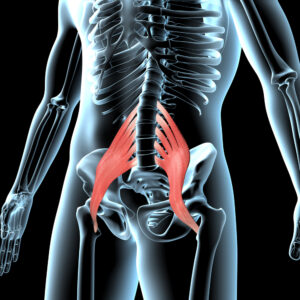There’s lots of reasons to dance in stiletto heels! They look amazing, they can help…

Psoas Activation: Part II
In the last article we talked through what your Psoas muscle is, where it can be found and how to start a conversation with it.
The first Psoas activation was simply to take your hand and start massaging the area between your belly button and your hip bone. I asked you to work that area and really feel what the tissue felt like. Can you feel the layer of adipose tissue (fat)? Can you get below that to feel the layers of muscle underneath? What does that feel like? Does the tissue feel different on each side of your body or does it feel the same? All of this information is helpful when you are trying to figure out what your body is telling you.
But it is just information. Remember that.
Let’s Get a Baseline
Before we begin this activation lets get a baseline for your hamstrings.
Do these two things for me:
- A simple standing hamstring stretch. Stand with your feet shoulder width apart, fold over and see how flexible your hamstrings are at this moment.
- If you are near a pole and want to do a quick 1-2 minute flow to see how you feel that is cool as well
Now let’s get into the meat and potatoes of your Psoas.
Step 1: place your thumb in your belly button
Step 2: Stretch your pinkie down to your hip bone
Step 3: Your middle finger should be the mid-point between your thumb and pinkie. Put your middle finger down on your tummy and hold it there. That is the spot we will be working in.
Step 4: Take your fingers out of your belly button and off your hip bone.
Now that we have the sweet spot. Another way to find it is draw a line from your belly button to your hip bone and find the halfway point.
Once you have the spot, I want you to take your thumb and start to press down on it. Press like you are trying to push past all the layers and get down into your guts. If you are on the right spot, this area should be pretty tender. For me, it feels like someone has pushed a hot poker through my stomach, you may not have that strong a reaction but it shouldn’t feel nice.
If you are pushing down and don’t feel anything then move your thumb a tiny bit in all directions until you find that one spot that makes you go “yikes”.
When you are on that spot slowly push down until you hit a wall of tissue then start to work your thumb in small circles. As you are working try to notice these things:
- Does the pain dissipate?
- Does the tissue quality change?
- Does your emotional response to touching that area change?
What we are looking for is a change in the feedback that the area is giving you. So, be as perceptive as you can.
Once you feel something change, slowly back out of the area and give me 3 belly breaths.
So Nice I Did It Twice
The good news is that you have another side to work now. Repeat the process on your other side. Notice if this side feels any different than the other side.
When you are done give me three belly breaths and slowly stand up and walk around.
Why do we need to walk around?
These activations work on re-connecting your brain (neurology) and your body (physiology). Once we have completed an activation and “connected” the two parts, you have to give your body a chance to live in its new movement pattern. In essence we have given your brain a stimulus that it needs to allow your body to relax into normal movement. But, for any change to stick your brain needs a moment to move around, feel what it feels and live into the new pattern. It is very important to walk after each activation and then re-test your baseline.
Once you have finished walking, re-test your hamstring flexibility to see if you feel anything different. And, if you have a pole go ahead and put on a song and do a little flow to see how your body feels.
Emotional Response?
Did any one have an emotional response while working in this area? If you did, that is completely normal. As I mentioned in the last article, the Psoas is connected with your emotional centers. It is also a muscle that reacts to trauma, stress and any other onslaughts we face in our day to day lives. Because of this, the Psoas can become shut down, or non-reactive. Using the activations to “wake it up” can also switch back on our emotional centers, almost like a light switch. Turning the Psoas “on” can also wake up emotions and bring them to the surface. We usually think of crying or sadness as the main emotional response, but be aware of anger, happiness, joy, fear, overwhelm. If any of these bubble to the surface just sit with them for a minute and let it flow.
If you have an emotion and you don’t know what to do with it, please feel free to reach out to me by email at [email protected] or by phone 803-201-0421.
Hooray! You have now successfully learned how to activate your breathing center and your Psoas. There is just one more activation in the big 3. In the next article we will start to look at your Glutes!
Latest posts by Susan Bartley (see all)
- Activated Hamstrings Make Your Splits Easier - March 17, 2023
- Re-Train the Brain, Re-Train the Body - March 10, 2023
- Let’s Get Your Glutes Going - January 13, 2023


